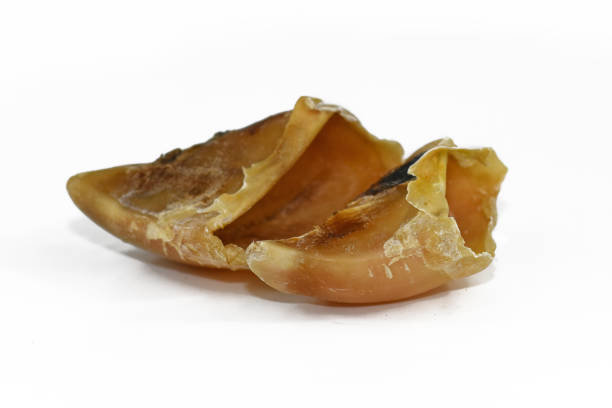Horn of Calf Hooves as Chews in Laboratory Dogs

European law recommends the enrichment of laboratory dogs with chewing objects. This study examines the suitability of the horn of calf hooves for this purpose and was performed with 62 dogs (60 beagles, 2 Foxhound Boehringer Ingelheim) across 3 research facilities. In facility A, 18 female dogs and 1 neutered male were housed in 6 groups, in facility B, 16 intact male dogs were housed in 8 groups and in facility C, 25 female dogs were housed in 6 groups under their usual housing conditions. Each group of dogs received autoclaved calf horn for 3 consecutive days. In addition to its role as an enrichment object, the nutritional components of the horn were determined. Dogs in facilities A and C chewed intensively in the first hour after they received the horn (average for A 1⁄4 29.3 minutes, average for C 1⁄4 22.8 minutes per dog). Thereafter, the chewing time decreased during the day. In facility B, many dogs initially reacted by barking and jumping at the horn, suggesting a reaction of uncertainty, most likely due to the dogs’ young age and lack of experience. Dogs in facilities A and C chewed significantly longer (P 1⁄4 0.009 in A; P 1⁄4 0.000 in C) and more frequently (P 1⁄4 0.008 in A, P 1⁄4 0.001 in C) on the first day compared to the second day. Consistent with these findings, the daily weight loss of the horn in facilities A and C was significantly higher on the first day compared to the second day (P 1⁄4 0.003 in A, P 1⁄4 0.002 in C). Fights over the horn were observed in 2 groups of intact male dogs, aged 4-6 months in facility B. Injuries of the oral cavity were not observed. Two dogs of facility B had minor crown fractures of a deciduous dens caninus. In conclusion, autoclaved horn of calf hooves is an attractive chewing object for dogs after a change in deciduous teeth. However, dogs should be supervised when these enrichments are newly introduced.
Döring, D., Ketter, D.A., Klima, A., Küchenhoff, H., Dobenecker, B., Schmidt, J., and Erhard, M.H. (2016). Horn of calf hooves as chews in laboratory dogs. Journal of Veterinary Behavior, 13, 39-45. DOI: 10.1016/j.jveb.2016.03.010
Photo: iStock.com/Firn
View ResourceTopic(s): Enrichment, Preventative Care, Preventative Health Care - Dental Care, Research and Teaching, Types of Enrichment, Veterinary Care